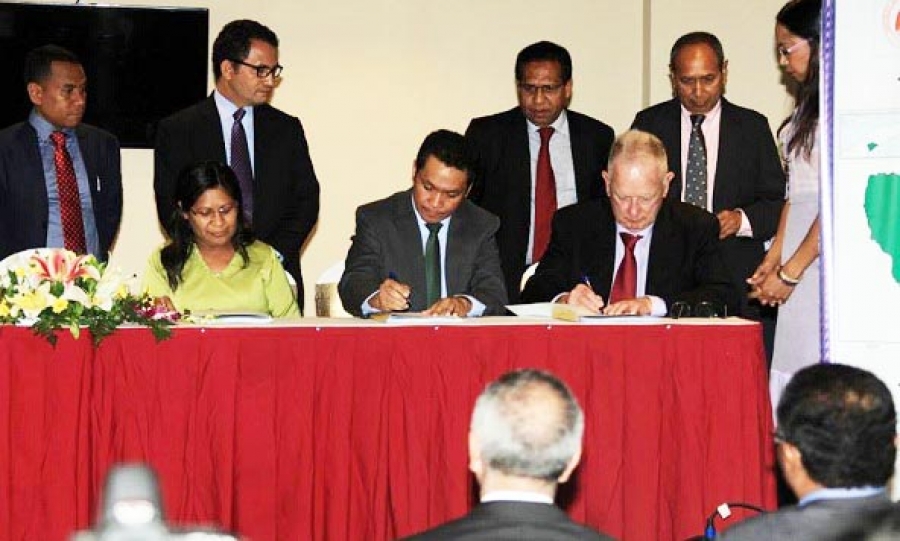Timor Resources Holdings, part of diversified manufacturing and engineering company Nepean Group, has taken 50 per cent of two prospective onshore blocks in Timor-Leste covering 2000 square kilometres.
Scientific studies carried out by Timor Resources has identified potential resource of more than 500 million barrels in this region.
The production sharing contract, signed by Nepean chairman David Fuller and Timor-Leste government representatives in the presence of Prime Minister Rui Maria de Araujo, could see the Australian company invest more than $US150 million. It is the first time in more than 40 years that an independent company has secured such rights in Timor-Leste.
Work is expected to start "immediately", with a 900 kilometre seismic survey planned for early 2018, Timor Resources said.
The initial three-year commitment will involve studies, seismic work and one exploration well involving a total cost of at least $US60 million, SuellenOsborne, the Managing Director for Timor Resources told Australian Financial Review.
The deal, which is Nepean's first foray into petroleum exploration, then has two further two-year options.
Osborne said the deal would see Timor Resources set up two local companies in Timor-Leste, with 90 per cent of staff set to be local.
The Australian Financial Review reported that the deal had been in discussion for six months.
"They don't have the resources to fund a development of this size alone so they have been looking for a partner who is prepared to share the risks and the rewards – a partner they can trust and who will work in a partnership," Fuller said of the deal with Timorese government.
Timor-Leste has been described as a "highly prospective region" for oil and gas but with onshore fields that had been closed to international exploration for 40 years.
Timor Resources exploration general manager Mike Bucknill, a former general manager of exploration at Central Petroleum, said onshore Timor "offers very good potential, as it is largely unexplored, yet it has the elements of an effective hydrocarbon system".
"You just need to look to the region and the prospectivity of the offshore activity to see the potential. Oil has been recovered from seeps and pits all along this coast," Bucknilltold AFR, noting that onshore exploration in the 1960s recovered oil from three wells in the permit area, one of which was still productive.
He said multiple exploration target and play types had been identified, while analysis of recovered oil pointed to favourable quality with low sulphur.
The Timor-Leste government has for years been seeking to raise interest in onshore exploration to help advance its ambitions to establish a $US2 billion petroleum corridor on the south coast, including a supply base, refinery, petrochemical and LNG plant, and a network of petrol stations.
Exploration and development in some offshore waters around the country has meanwhile been stalled by a sovereignty dispute between Timor-Leste and Australia where the Woodside Petroleum-operated Sunrise venture hoped to develop a floating LNG venture. Some 95 per cent of government revenues comes from offshore petroleum production, mostly from ConocoPhillips' now-mature Bayu-Undan gas venture.
